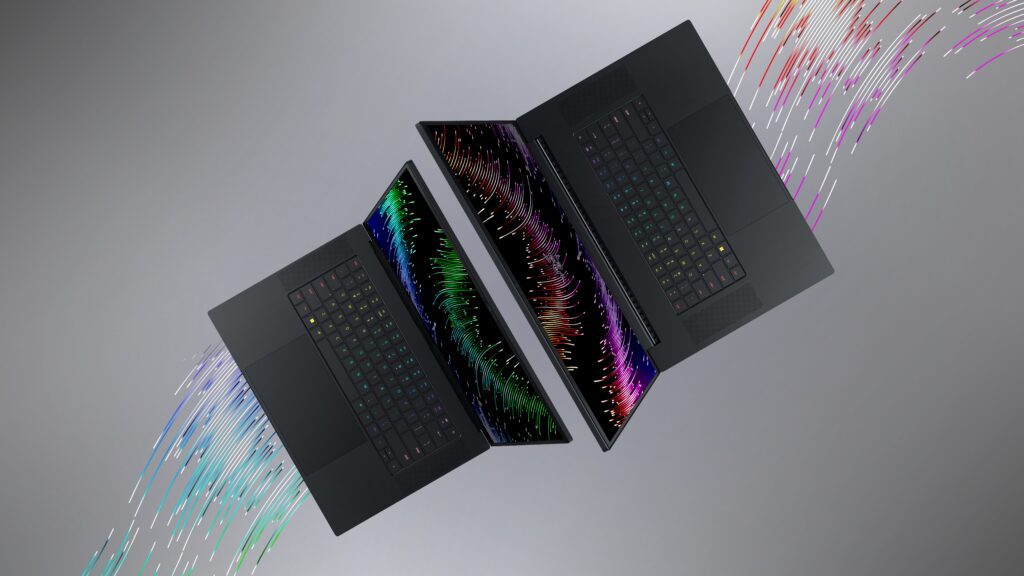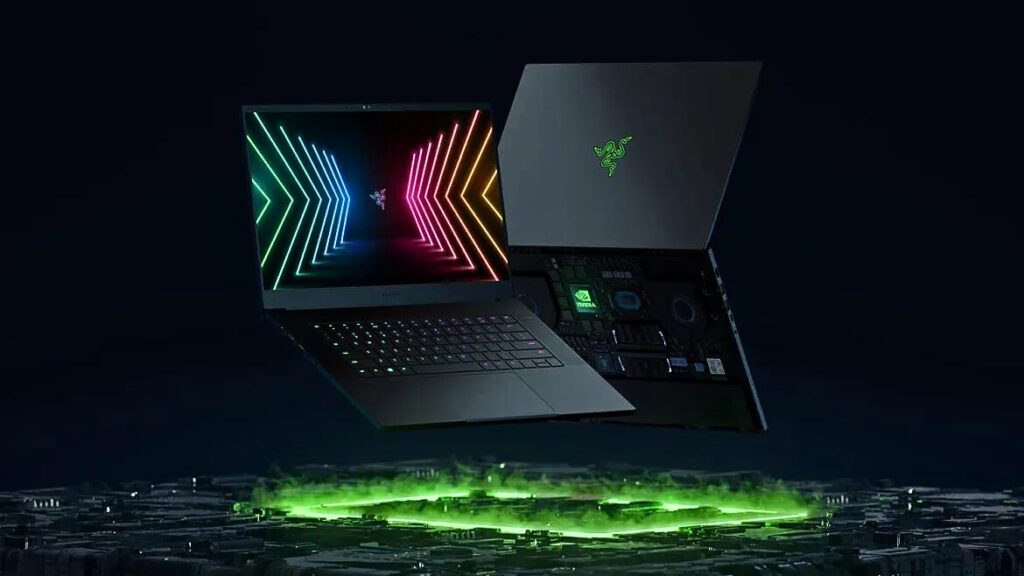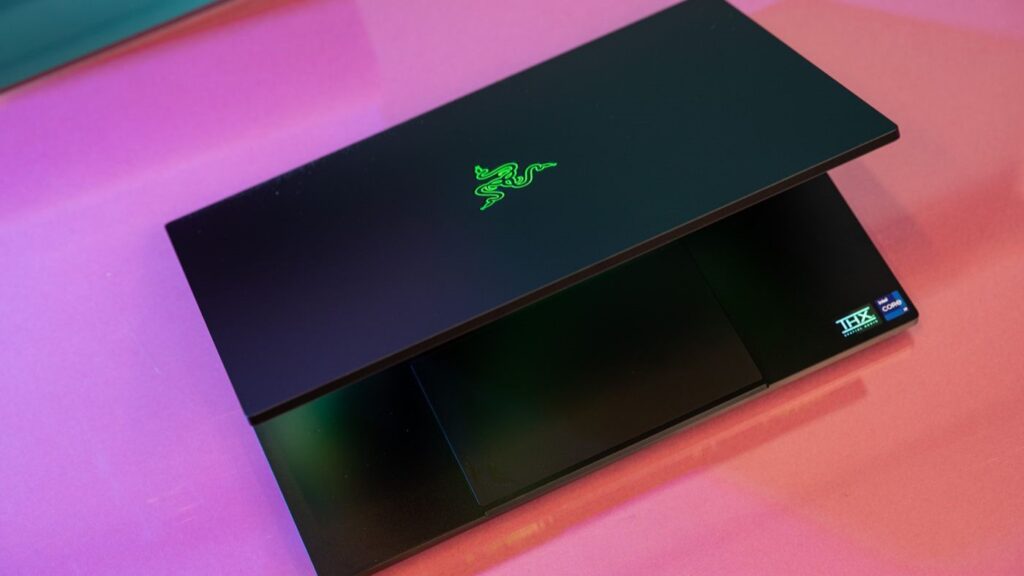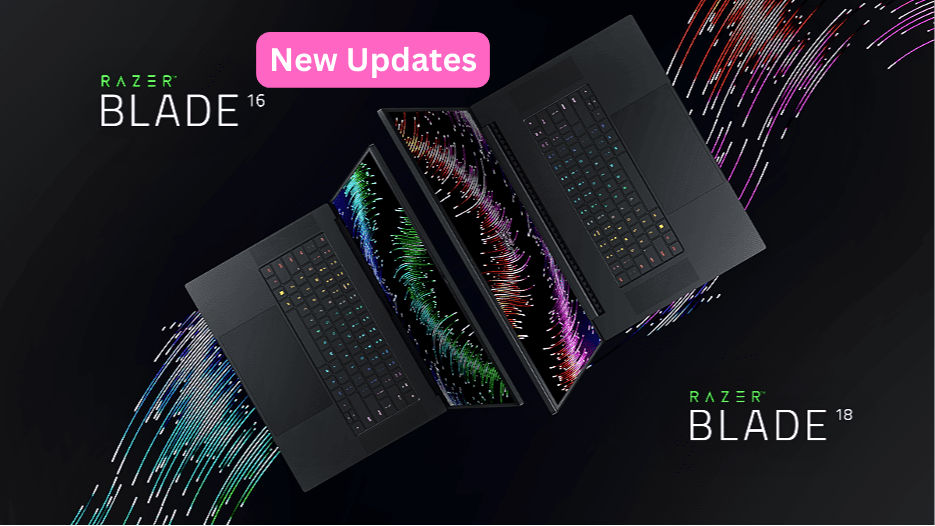Razer Blade 16 & 18: Unveiled ahead of CES 2024, it’s set to surprise audiences in Vegas with the world’s first 16-inch 240Hz OLED display. Razer is bringing a major update of display upgrades for the Razer Blade 16 and Razer Blade 18 gaming laptops ahead of the full unveiling of the updated laptops at CES next week in which the Blade 16 gets a 240Hz OLED display, and the Blade 18 gets a 165Hz 4K panel with G-Sync.
Razer says it’s the world’s first 16-inch 240Hz OLED panel, co-developed with Samsung, while the Blade 18 will get a 165Hz 4K LED panel with G-Sync. Both panels will be Calman verified and individually factory calibrated. Like the existing blade display options, they will feature a 100 percent DCI-P3 gamut.
Razer Blade 16 & Razer Blade 18 New Updates
As an OLED panel, the Razer 16’s 2560 x 1600 display should have excellent true blacks and super-fast response times. Razer says it will have a 1,000,000:1 contrast ratio, VESA DisplayHDR True Black 500 certification, and a VESA ClearMR 11000 rating for motion blur. ClearMR is a measure of the ratio of clear pixels to blurry pixels during motion, and VESA’s pitch for it is that it’s supposed to be easier to understand than other measures of reaction time or motion blur.

The Razer Blade 18 aims to set a new benchmark in big-screen gaming laptops with the world’s leading 4K 165Hz 18-inch display. This display offers ultra-high resolution with 4K clarity. It has a fast 165Hz refresh rate that ensures smooth and fluid gameplay. And it has a 3 millisecond response time and Nvidia G-Sync support. G-Sync support means the display prevents screen tearing.
And it has up to 100% DCI-P3 color space, covering 25% more color space than the standard sRGB color space, for more vibrant colors and accurate images.
Razer Blade 16 Currently
Razer Blade 16:- The Blade 16 currently comes with two display options: there’s a dual-mode mini-LED panel that can either run at 1920 x 1200 at 240Hz or 4K at 120Hz, or it can come with a 240Hz 2560 x 1600 LED panel. The company’s 2023 revision of the 16-inch blade includes great specifications, from Nvidia’s RTX 4090 laptop GPU to Intel’s top-of-the-line Core i9-13950HX processor, but you’ll have to work hard to buy it.

The basic design is rectangular like most laptops, but it’s broken down by rounded corners at the edges and a sharp entry in the center to elevate the screen. Despite the specifications, it looks like a streamlined design, which, despite being more than 2 kilograms, allows you to lift it in one hand.
As far as ports are concerned, the laptop has a USB-C 3.2 port and a Thunderbolt 4 port. There are three USB-A 3.2 ports and HDMI 2.1 ports and an SD card reader for output. The Blade 16 also supports Wi-Fi 6E which will allow you to use 6GHz frequencies on your network. It’s probably the best display on a gaming laptop at the moment, giving you almost OLED-quality black and 1,000 nits of brightness.
The real story here is of dual mode that allows you to switch between 4K (3840 x 2160) 120Hz and FHD+ (1920 x 1200) 240 Hz but there is a problem.
You can’t change these settings right away, you’ll have to use Razer’s software to do so or change it in the BIOS at startup. Replacing this through the software will require a restart. This means that you will effectively stop all your work while waiting for the screen to switch on. However, given the technology, it’s a small price worth paying.
Like its clear design, Razer has gone with a more-than-more approach to pre-loaded software. Out of the box on Windows 11, you get an all-in-one hub called Razer Central and that’s it. It gives you access to everything you need by letting you customize or create new keyboard light patterns, assign function keys, change trackpad settings, flip screen mode, and more using the in-built editor.
Table of Contents
Razer Blade 18 Currently

The Razer Blade 18 is large, has an exceptionally fine display and strong build quality. Plus, its upgradability is a great future-proofing feature. Yet it is slightly behind the major rivals in terms of performance and is also expensive.
Razer has joined the 18-inch legendary club with the giant Razer Blade 18 gaming laptop, whose primary market is for gamers looking for a desktop replacement that’s as powerful as desktop performance, but mobile enough to take you on the road.
As one might expect, this is a premium offering, with many of its features including a beautiful 18-inch QHD+ display with a 240Hz refresh rate, an exceptional selection of ports, very good upgradability, and a stylish, robust design.
On Razer’s website you will find Razer Blade models for sale with Intel Core i9-13950HX or Intel Core i9-13980HX. The first one can be paired with an Nvidia RTX 40 series video card, SSD storage unit, and RAM of your choice, with prices for the most affordable models starting at $2,899.99. With the Core i9-13980HX you can choose only one model. It comes with an RTX 4090 GPU, 2TB SSD storage, and 64GB of RAM as standard, and costs $4,999.99.
All Blade 18 models come with QHD+ (2560 x 1600)displays with a 240Hz refresh rate. Although 4K fans may be disappointed by the lack of a 4K option here, that really doesn’t have to be the case. It’s a premium feature that gives you the fast, perfect balance between detailed scenes and frame rates to keep you competitive. Other than that, the display looks fantastic. Despite its massive size, which is quite memorable, almost every game I ran on it, including Sniper Elite 5 and Green Hell, all looked like they had graphics upgrades.
Razer Blade’s Core i9-13950HX CPU was shaped against the Strix, but also from another 18-inch giant, the MSI Titan GT77. Both of these are strong performers, each with Intel i9-13980HX processors, which are slightly zipper cousins from my laptop’s CPU. For actual benchmarking, I ran two standard tests, Maxon Cinebench’s multi-threaded benchmark and a bespoke test that used the free HandBrake utility.
Being a teaser announcement ahead of CES 2024, that’s all the information we have at the moment, but we’ll be sure to discover the full features and possibly wallet-busting price tags from the Vegas show floor next week.
Read also: Redmi Note 13 Pro 5G आ गया मार्केट में शानदार कैमरा 200 MP के साथ, जानिये Price
